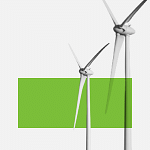Targets for sustainability-linked loans to receive greater scrutiny in 2024: report
The sustainable finance market is also expected to broaden with new products and frameworks

THE credibility and robustness of targets in sustainability-linked loans (SLLs), and their alignment with a company’s business activities, will be crucial considerations for investors in 2024, said Sustainable Fitch in a report on Friday (Dec 8).
“This is a trend widely observed in the public debt market that we expect will become a defining feature of the SLL market in 2024,” said the company, which focuses on environmental, social and governance (ESG) data.
The SLL market fell sharply in 2023. The year-to-date value of SLLs structured as at November, in US dollars, was nearly 50 per cent lower than in 2022, data from news and analysis service Environmental Finance indicated. Higher rates and macro uncertainty may have deterred borrowing, especially from highly-leveraged companies.
“Fatigue among borrowers with the reporting requirements, and time and cost to structure a loan with ESG covenants and ratchets may have also been a contributing factor to the decline,” Sustainable Fitch noted.

Investors have negative perceptions over “sustainability washing” and the overcomplexity of ESG provisions in loan agreements, research from Covenant Review, another Fitch company, found. This has led to the rejection or removal of the ESG ratchet in loan deals in the European leveraged loan market.
The Sustainability-linked Loan Principles framework, published by global loan-market industry groups in February, has tried to address these concerns. It sets stricter criteria for sustainability performance targets and requires key performance indicators (KPIs) to be material to a borrower’s sustainability strategy and business operations. But wide adoption of the framework is uncertain due to its voluntary nature, Sustainable Fitch noted.
A NEWSLETTER FOR YOU

ESG Insights
An exclusive weekly report on the latest environmental, social and governance issues.
As investors seek protection against greenwashing risks, external reporting and assurance on targets may become a standard requirement. Borrowers, lenders and investors may remain wary of reinstating ESG ratchets without significant improvements in companies’ sustainability performance.
Sustainable Fitch believes that private credit ESG strategies will face the same target credibility challenges. Sustainability-linked issuances have grown in popularity among private credit funds, especially in financing the energy transition activities of sectors where it is tough to reduce carbon emissions.
Product, framework innovation
Despite the challenges, Sustainable Fitch believes that the sustainable finance fixed-income market will broaden in 2024, with continued innovation in labelled debt products and frameworks.
Agrifood-related issuances, such as those linked to regenerative agriculture and food security projects, are likely to grow as the sector is asked to accelerate decarbonisation. Green hydrogen projects and green shipping fuel projects could expect greater investor interest.
Sustainable finance investors are also venturing into the nascent realm of nature and biodiversity, with labelled bonds including biodiversity conservation as part of their use of proceeds. Carbon credits linked to nature-based solutions and biocredits could further channel financing to biodiversity.
New debt labels and more sophisticated sustainable finance frameworks are also likely to be launched in 2024.
“We expect this to be a key trend of 2024; as the market comes of age, its practitioners become more experienced, and more investors look at sustainability through fixed-income instruments. Investors are also ready to venture to more novel sectors and structures,” Sustainable Fitch said.
Blue bonds, which finance ocean sustainability, could garner more interest from investors next year. Asian countries, many of which are dependent on coastal and marine resources, could issue inaugural blue bonds and guidelines.
For instance, the Philippines’ Securities and Exchange Commission published guidelines for blue bond issuances in September, which will pave the way for future issuances, the report noted.
Volatility to test sustainable finance
Another trend Sustainable Fitch expects in 2024 is localisation, whereby sustainable finance is being increasingly tailored for each region’s needs. The report also predicts more efforts to define “transition”, including clearer guidance on transition activities and viable pathways.
“With no universal definition or guidance, Asian countries are innovating their own guidelines and frameworks to facilitate their own efforts,” it said.
Other trends to watch in 2024 include how more developed and emerging markets could consider mandatory adoption of the International Sustainability Standards Board’s disclosure standards, as well as investors paying more attention to social themes such as public health.
That said, political and macroeconomic uncertainties are expected to test the sustainable finance market next year. High interest rates could affect the willingness of issuers to launch new labelled debt instruments, while trade friction could raise the cost of the energy transition.
“For the year ahead, it could remain the case that sovereigns drive some of the growth in labelled bonds, with issuance from corporates and financial institutions remaining restrained,” Sustainable Fitch said.
KEYWORDS IN THIS ARTICLE
BT is now on Telegram!
For daily updates on weekdays and specially selected content for the weekend. Subscribe to t.me/BizTimes
ESG
EU, ISSB agree on minimising overlaps in company climate disclosures
Family businesses must lead the way in sustainability: TPC’s Chavalit Frederick Tsao
Australia grants feasibility licences for offshore wind farms
Asset owners can’t afford to sidestep sustainability
US reforms green law to speed clean energy, infrastructure permits
Singapore’s chance to become a global leader in sustainable aviation fuel
